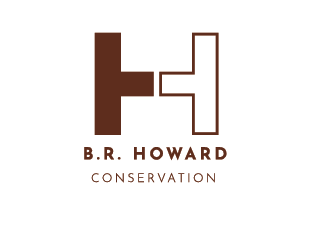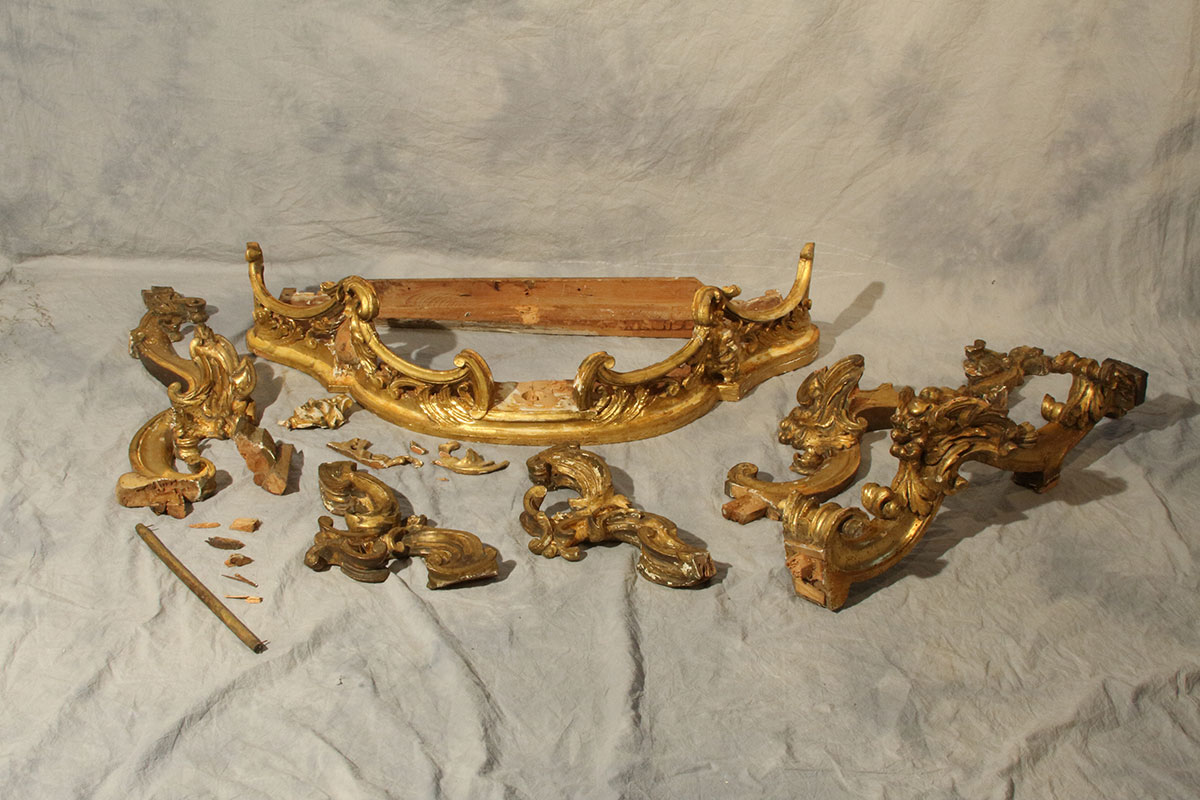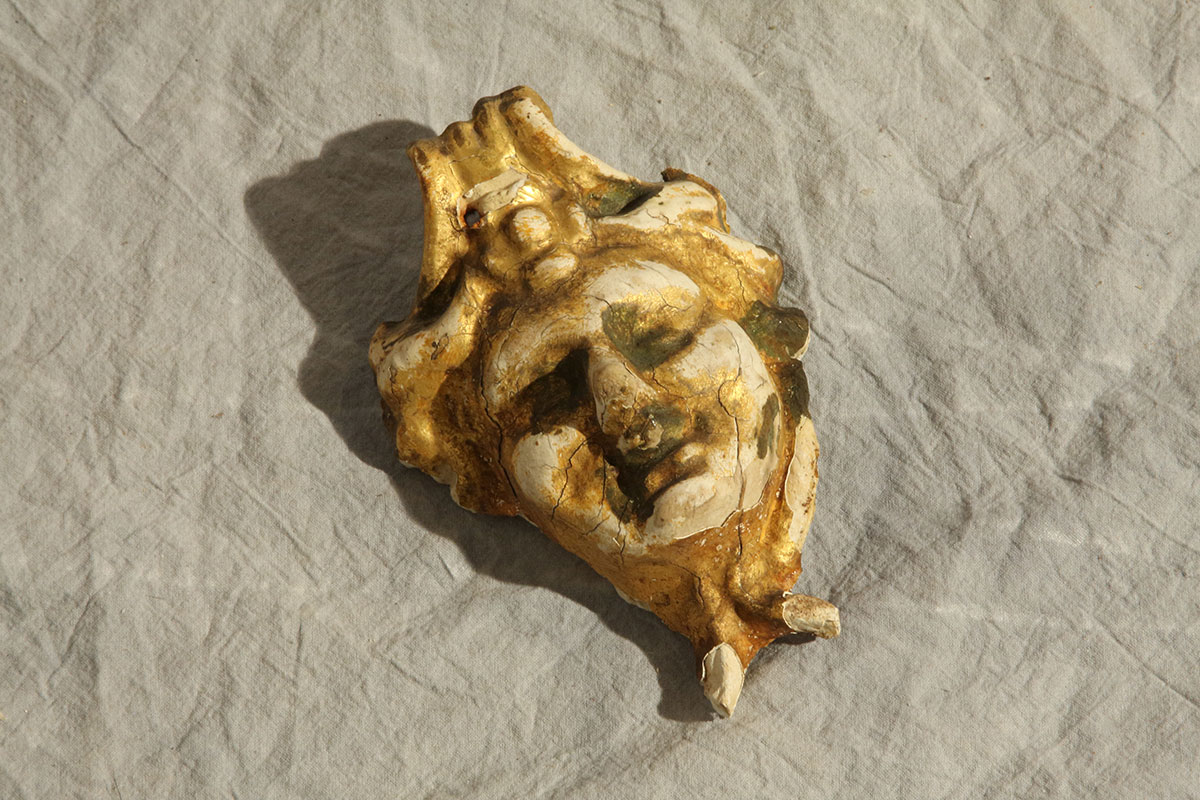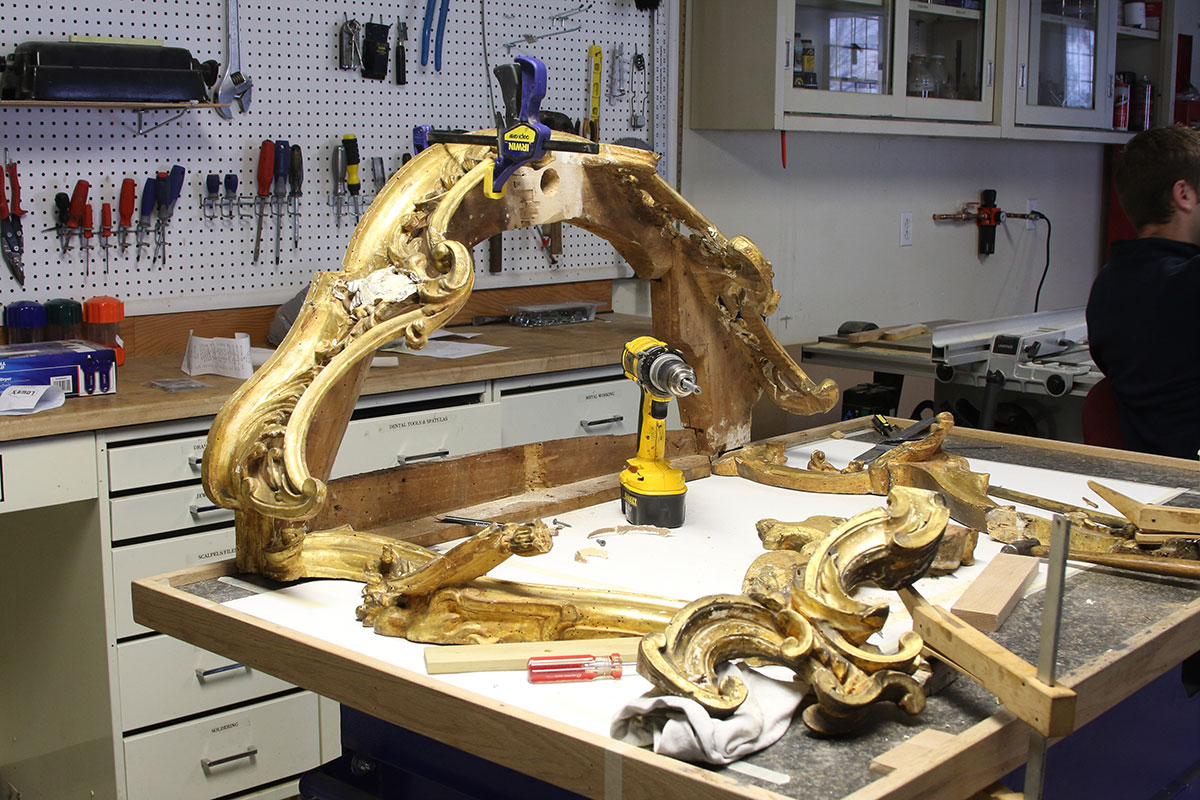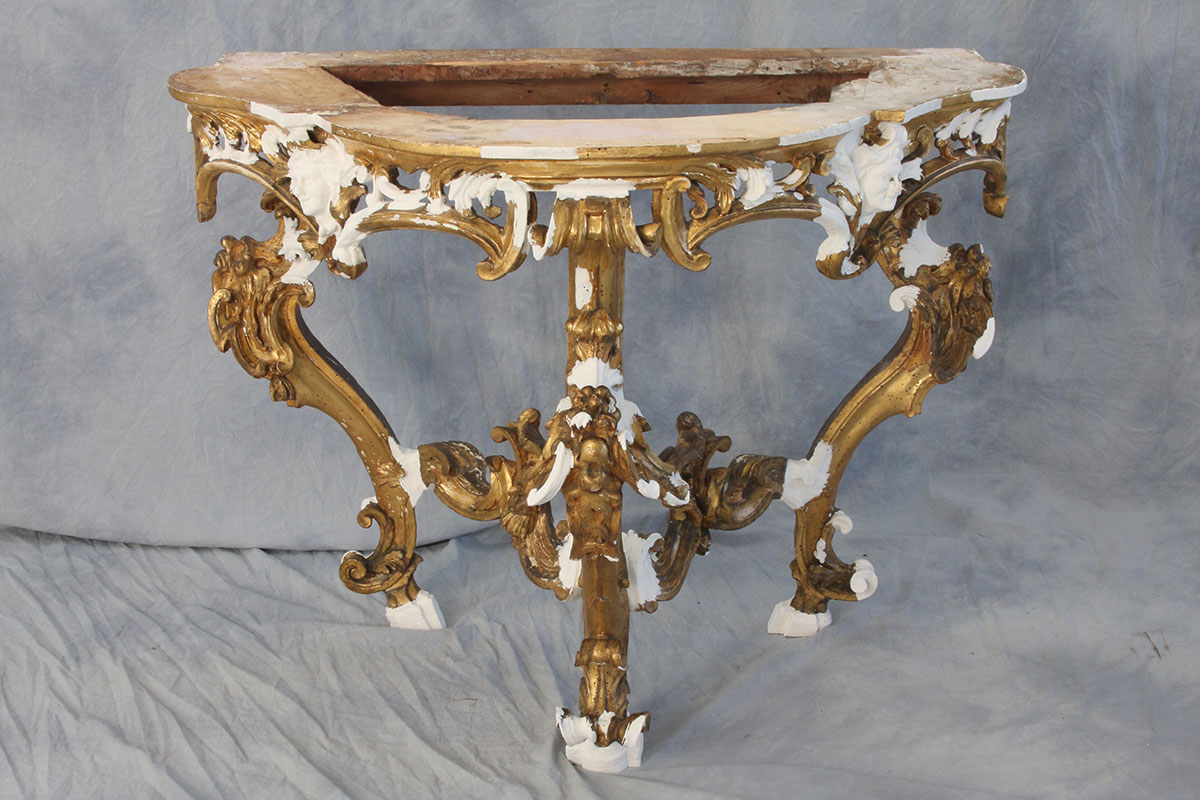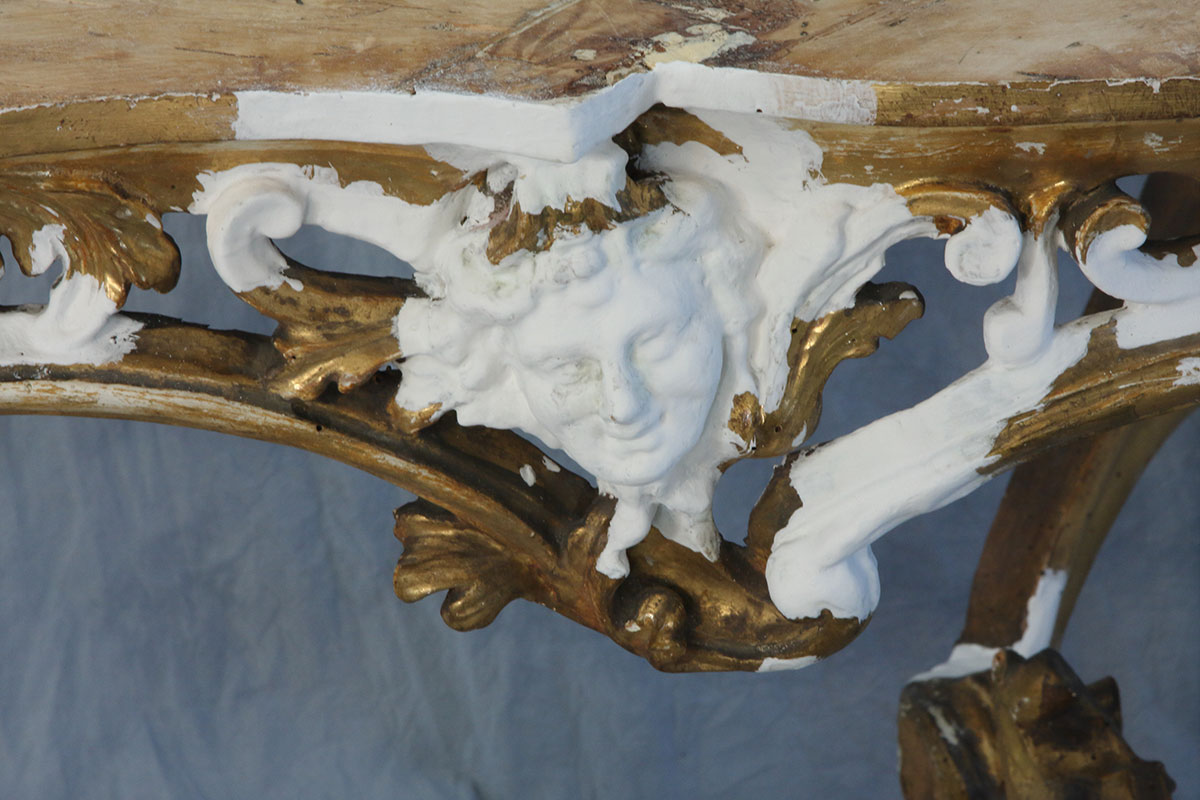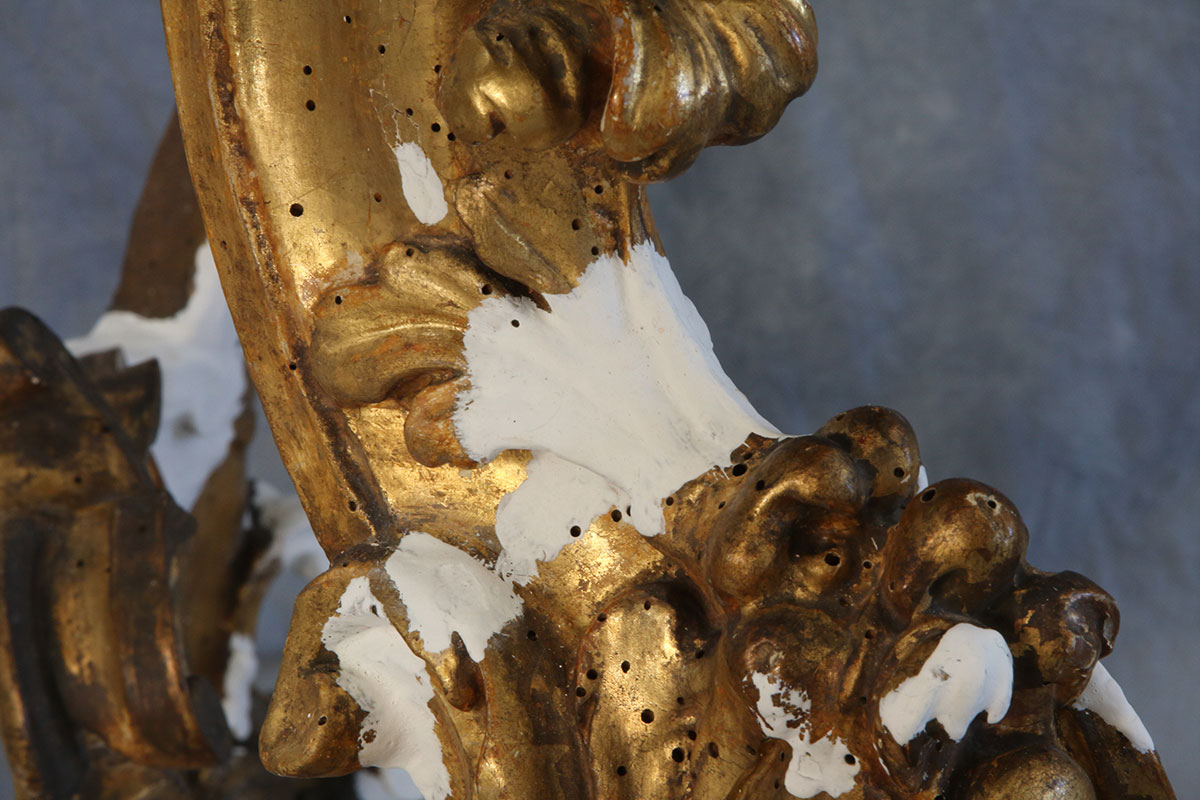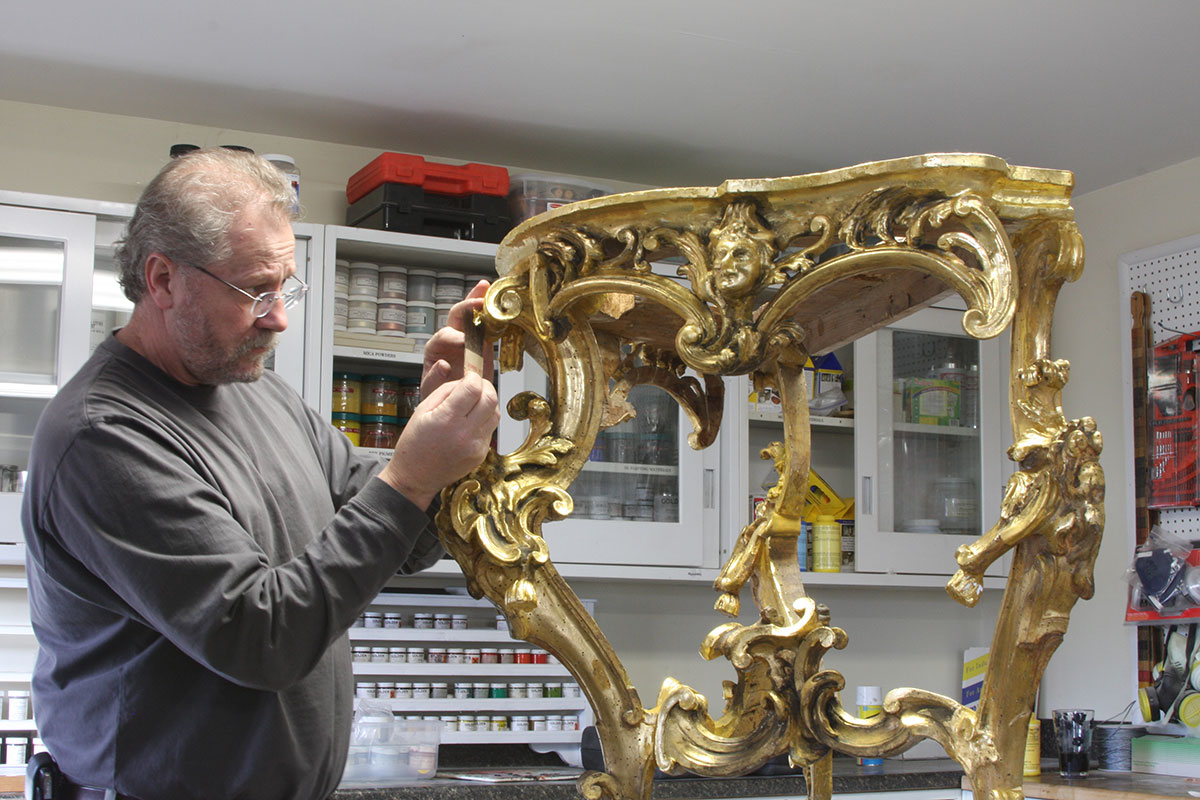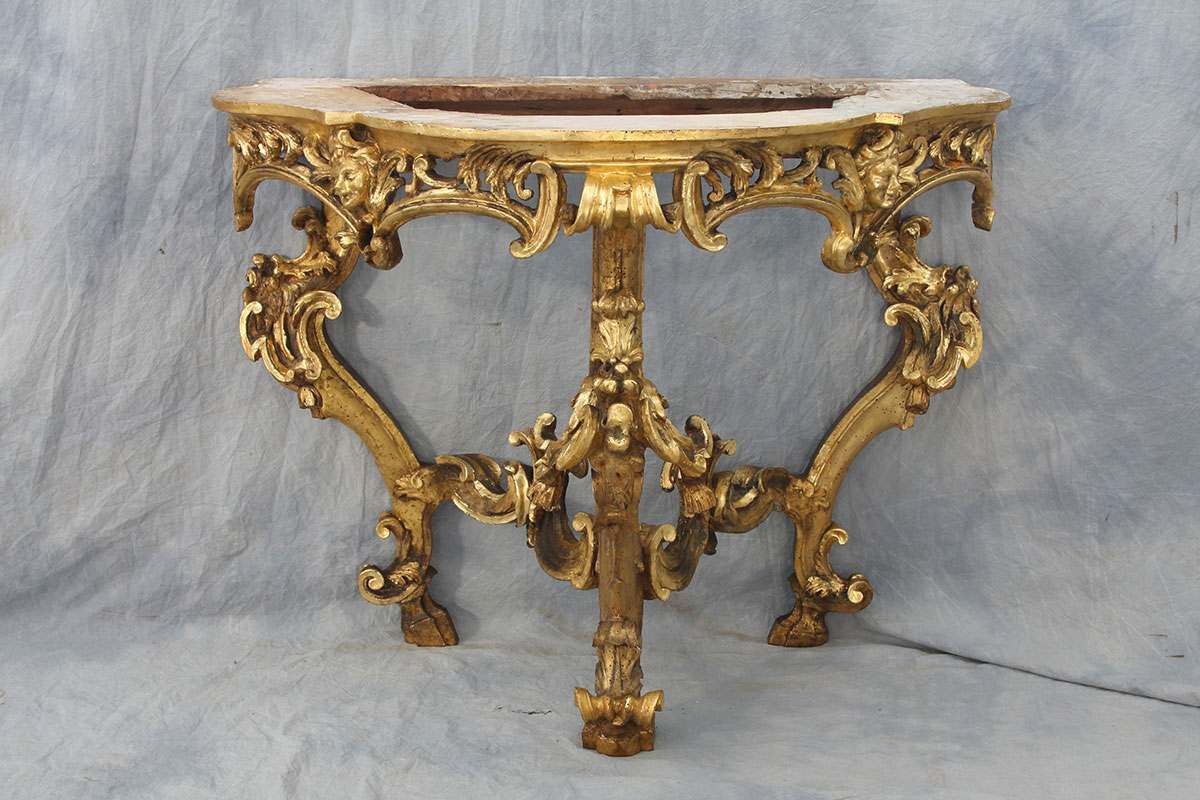About this project
B.R. Howard was contracted by The Westmoreland Davis Memorial Foundation to perform a collection condition assessment and perform conservation treatments on numerous historic objects located within the mansion at Morven Park.
The Louis XVI console table had previously suffered extensive insect damage, and many of the decorative elements were missing. Most of the joinery was loose or detached. Large areas of flaking or lost gesso and gilding were observed along with numerous fractures and old repairs.
What we did
The table frame joinery was disassembled to facilitate repairs. Old adhesive residue and non-original nails were removed. Areas damaged by wood boring insects were consolidated. Losses of wood caused by earlier repairs were filled by using a two-part carve-able epoxy paste.
All original tenons had been cut and removed during earlier restorations of the table; therefore, tenons were added to the upper ends of the rear legs and the single front leg using sections of tulip poplar adhered using hot hide glue or a two-part epoxy depending upon conditions of the original wood substrate. The ends of the carved stretcher were doweled, replacing the missing tenons that joined the table legs.
The table frame was reassembled using hot hide glue and or carveable epoxy paste to rejoin the tenons and dowel joints. Areas of lost decoration were reconstructed using tulip poplar, sawn and carved to match extant decorative elements. The replicated elements were adhered to the table using hot hide glue. Repairs, newly carved decorations, and losses were locally filled using reversible materials.
All surfaces were carefully cleaned using an aqueous gel. Areas of lifting or flaking gesso were consolidated. Gesso fills were selectively carved and sanded to blend with the adjacent original surfaces and a medium yellow bole was then applied over the fills and repairs. The repaired areas were in-gilded using a 23-karat double gold leaf to match the remaining original gilded surfaces.
